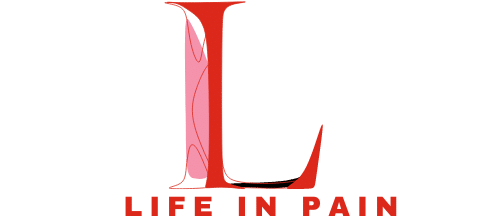What Are the Privacy Concerns with Household IoT Devices?

Welcome to the era where technology is transforming our daily lives, and the Internet of Things (IoT) plays a pivotal role in that transformation. IoT includes a collection of devices that connect to the internet and exchange data with each other. From smart refrigerators that remind you to buy milk, to home security systems that alert you when someone’s at the door, IoT devices bring a lot of convenience to our lives.
However, the proliferation of IoT devices in our homes raises numerous privacy and security concerns. As you integrate more connected devices into your living spaces, your personal data becomes more accessible and vulnerable. In this article, we’ll delve into the privacy risks associated with household IoT devices, the security vulnerabilities they present, and how to keep your data safe and secure.
Avez-vous vu cela : What Is the Future of IoT in Personalized Shopping Experiences?
The IoT and Your Personal Data
Imagine your daily routine: waking up to a smart alarm clock that adjusts to your sleep patterns, asking your smart home assistant about the weather, and using a smart coffee maker that brews your coffee just the way you like it. These scenarios might seem ideal, but the convenience comes at a cost to your privacy.
IoT devices constantly collect, store, and transfer data. This data includes private information, such as your daily habits, preferences, and even your personal conversations. This constant data flow presents several risks, as it increases the chance of your personal information being accessed without your consent.
A voir aussi : What Are the Latest Developments in IoT for Pet Care and Monitoring?
Moreover, many IoT devices are integrated with third-party services. For instance, your smart thermostat might use a weather forecasting service to adjust your home’s temperature. This means your data can be shared with external organizations, which can use it for various purposes, including targeted advertising and market research.
Security Vulnerabilities of IoT Devices
In addition to privacy concerns, IoT devices present various security risks. Many IoT devices lack robust security measures, making them an easy target for cybercriminals. By exploiting these vulnerabilities, hackers can gain unauthorized access to your devices and the data they hold.
A common security vulnerability in IoT devices is weak authentication. Some devices use default passwords, which are easy to guess or find online. Once a hacker gains access to one device, they can potentially infiltrate your entire home network. From there, they can steal sensitive information, manipulate your devices, or even launch attacks against other networks.
Another major concern is the lack of secure data transmission. Some IoT devices transmit data without encryption, leaving it exposed to interception. This is akin to sending a postcard in the mail – anyone who intercepts it can read its contents.
Defending Your Privacy and Security
With the increasing importance of IoT devices in our lives, it’s critical to consider their impact on your privacy and security. Despite the risks, there are several ways to make your IoT devices more secure and protect your personal data.
Firstly, it’s crucial to take the time to properly configure your devices. Change default passwords to strong, unique ones, and enable any available security features. Consider using a separate network for your IoT devices, to isolate them from your main network and minimize potential damage if a device is compromised.
Secondly, ensure secure data transmission by using devices that encrypt data. This makes the data unreadable to anyone who might intercept it. Regularly update your devices, as updates often include security patches for known vulnerabilities.
The Role of Manufacturers and Legislation
While users can take steps to secure their IoT devices, manufacturers and legislators also have a part to play. Manufacturers need to prioritize security in the design and production of IoT devices, rather than treating it as an afterthought. This includes implementing strong authentication methods and ensuring secure data transmission.
On the legislative side, governments need to establish and enforce regulations to protect consumers. This includes mandating the use of robust security measures in IoT devices and setting standards for data privacy.
In conclusion, while IoT devices offer numerous benefits, they also carry potential privacy and security risks. As consumers, it’s important to be aware of these risks and take proactive steps to protect your personal data. However, manufacturers and legislators also need to step up to ensure that the benefits of IoT devices are not outweighed by the risks they present.
Guidelines for Best Practices in IoT Device Usage
Despite the challenges, it’s feasible to continue enjoying the benefits of IoT devices while mitigating privacy and security risks. A few best practices will allow you to strengthen the security of your devices. It’s critical to remember that the responsibility of ensuring privacy and security with IoT devices doesn’t fall solely on manufacturers and legislation. As users, we hold a key role in protecting our data.
Begin by properly configuring each device. This includes changing default passwords to something unique and robust. Default passwords are generally easy to crack, so replacing them with complex passwords reduces the risk of unauthorized access. Furthermore, make sure to regularly update your software and firmware, as these updates often include vital security patches that fix known vulnerabilities.
In addition, consider the data transmission methods of your devices. Opt for devices that offer data encryption, which makes your data unreadable to potential interceptors. Also, consider setting up a separate network for your IoT devices. This helps to isolate your main network, minimizing the potential damage in the event of a security breach.
Finally, always be conscious of the information your devices have access to. Regularly review your privacy settings and limit the data your devices can collect and share, especially with third-party services.
Looking Forward: The Future of Privacy and Security in IoT
As IoT devices continue to grow in number and complexity, so do the privacy and security challenges they pose. However, by keeping abreast of the latest advancements in IoT security, following best practices, and advocating for effective legislation, we can harness the benefits of connected devices while minimizing the risks.
Manufacturers must be proactive in designing devices with robust security features, and updates must be regular and easy for users to install. Legislators, too, need to ensure there are stringent laws in place to protect sensitive data and penalize security breaches.
Looking forward, the future of IoT involves a delicate balance between convenience and privacy. While the conveniences offered by smart homes and other IoT applications should not be downplayed, neither should the potential privacy and security risks. As consumers, we need to stay informed about these risks, demand better security measures from manufacturers, and follow best practices to protect our personal data.
In conclusion, IoT devices have transformed our lives in many ways, but they also present significant privacy and security challenges. It’s crucial that users, manufacturers, and legislators work together to ensure that these devices are safe and secure. By taking proactive steps and considering the potential risks, we can ensure that the age of IoT is marked by innovation, convenience, and most importantly, security.
